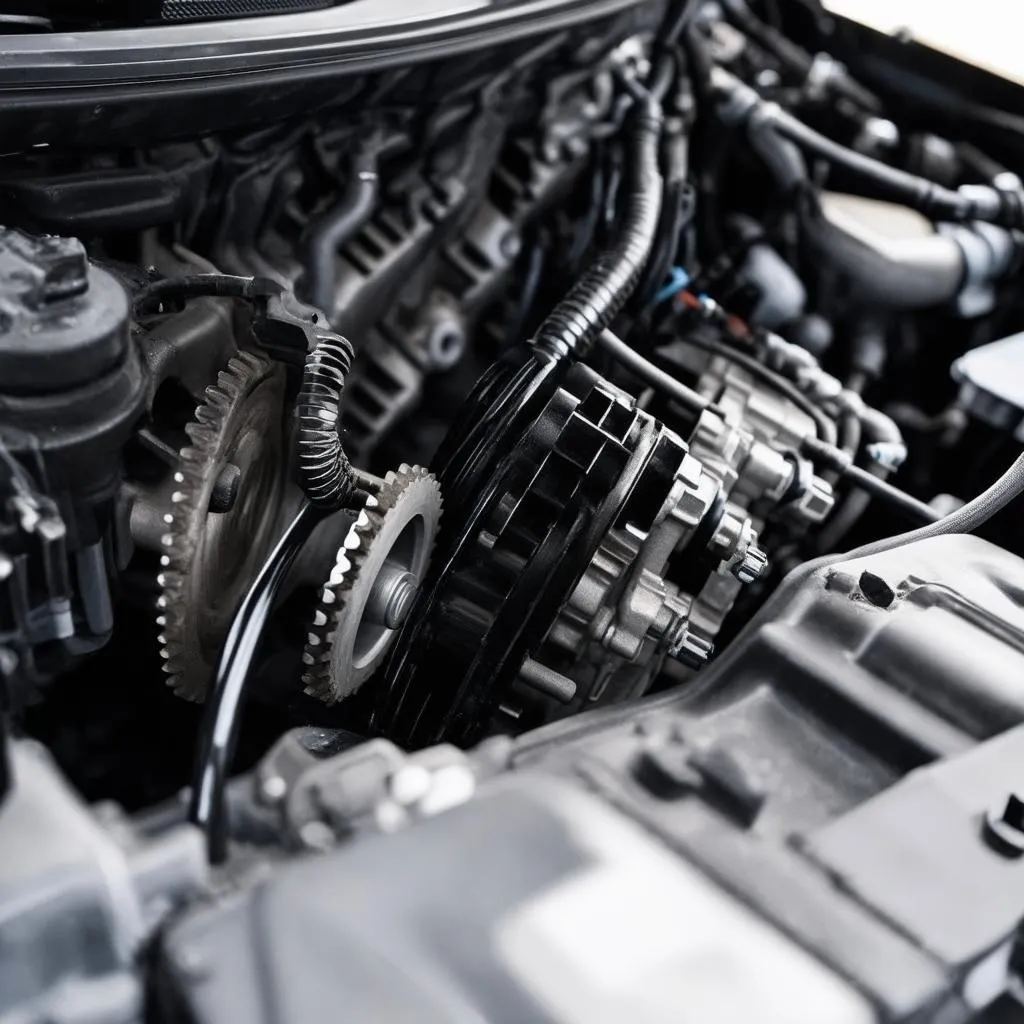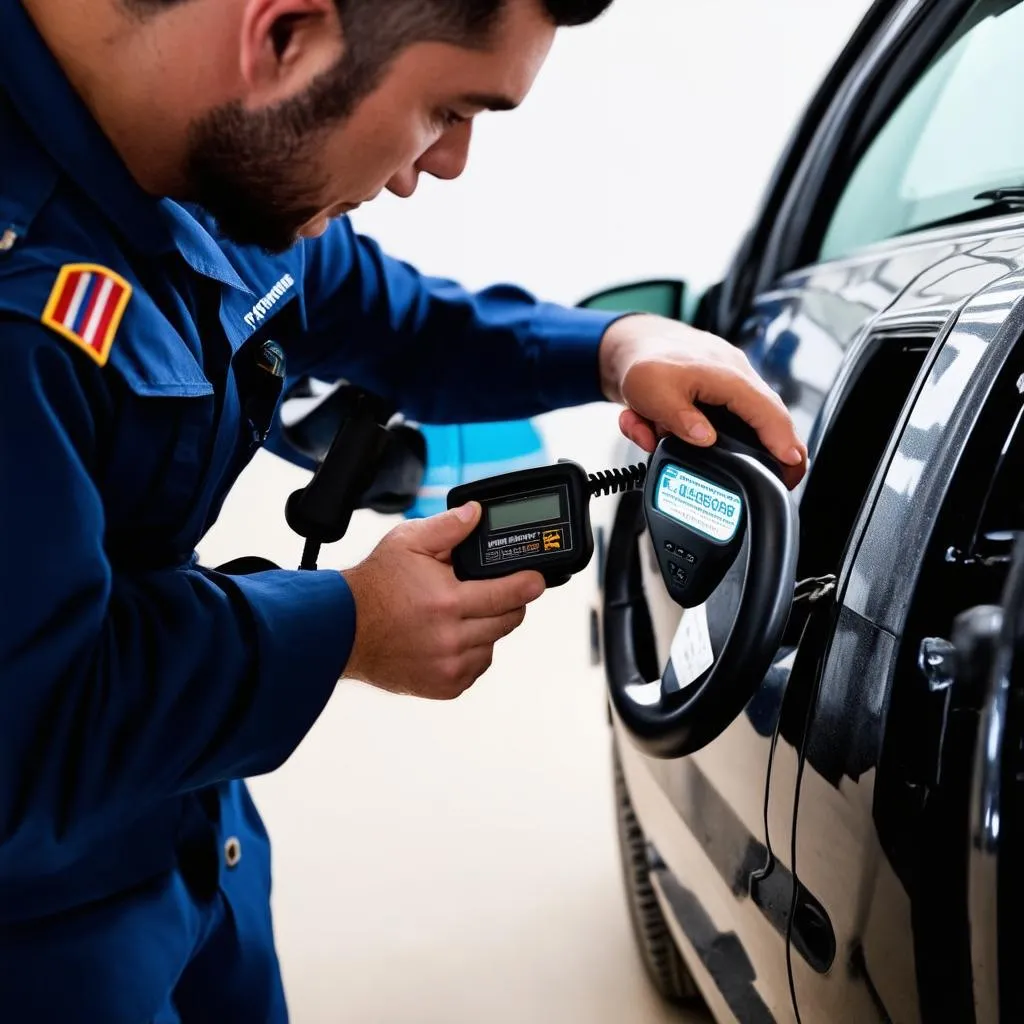Imagine this: You’re cruising down the highway, the engine humming happily, when suddenly, the dreaded “check engine” light pops up on your dashboard. Panic sets in. What’s wrong? Is it something serious? A quick scan reveals the cryptic code “P1771.” Sounds terrifying, right? Don’t worry! This article unravels the mystery behind the OBD-II code 1771 and equips you with the knowledge to conquer this automotive puzzle.
What Does OBD-II Code 1771 Really Mean?
Before diving into the specifics of P1771, let’s understand the basics. OBD-II, or On-Board Diagnostics, is a system that monitors your car’s engine and emission control systems. When a problem is detected, it triggers a specific code, like our mysterious P1771, stored in the car’s computer.
In simpler terms, the P1771 code signals a potential issue with your car’s automatic transmission, specifically focusing on the “Downshift Switch Circuit.” This switch plays a crucial role in smooth gear changes, particularly when you’re decelerating or going downhill.
Why Is Understanding P1771 Important?
Besides the obvious annoyance of a glowing “check engine” light, ignoring P1771 can lead to:
- Harsh Downshifts: Imagine feeling a sudden jolt when your car shifts gears. Not a pleasant experience!
- Transmission Damage: Prolonged neglect can damage your transmission, leading to costly repairs.
- Reduced Fuel Efficiency: A malfunctioning downshift switch can throw off your car’s optimal gear selection, impacting fuel consumption.
 car-transmission
car-transmission
Common Causes and Solutions for OBD-II Code 1771
The P1771 code often indicates a problem with the electrical circuit connected to the downshift switch. This could mean:
- Faulty Downshift Switch: Like any electrical component, the switch itself can wear out or fail.
- Wiring Issues: Damaged, corroded, or loose wires within the circuit can disrupt the signal.
- Transmission Control Module (TCM) Problems: In some cases, the fault might lie with the TCM, the brain behind your car’s transmission.
Taking Control: What to Do When P1771 Strikes
-
Don’t Panic: Take a deep breath. Seeing the code doesn’t necessarily mean a complete transmission overhaul.
-
Consult a Professional: While some DIY enthusiasts might tackle the diagnosis, it’s best to consult a qualified mechanic specializing in European cars. They have the expertise and specialized dealer scanner tools to pinpoint the exact cause.
-
Ask the Right Questions: When talking to your mechanic, don’t hesitate to ask:
- “What’s the most likely cause of P1771 in my specific car model?”
- “Can you show me the diagnostic readings?”
- “What are my repair options, and what are the associated costs?”
 car-diagnostic
car-diagnostic
Beyond P1771: Other Transmission-Related Codes
P1771 isn’t the only code related to transmission issues. Other codes you might encounter include:
- P0700: Transmission Control System Malfunction
- P0706: Transmission Range Sensor Circuit Range/Performance
- P0715: Input/Turbine Speed Sensor Circuit Malfunction
Don’t Let P1771 Rain on Your Parade
While encountering the P1771 code might seem daunting, remember, knowledge is power! By understanding its meaning and taking prompt action, you can prevent minor issues from snowballing into major headaches. Regular maintenance and timely repairs are key to a happy and healthy car.
Need Help Deciphering Your Car’s Codes? Contact us via WhatsApp at +84767531508. Our team of automotive experts is available 24/7 to provide support and guidance on diagnostic tools and software for your European car. Let us help you keep your vehicle running smoothly!